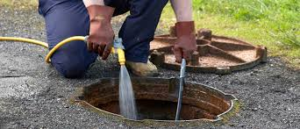Duluth Motorcycle Accident Lawyer will help victims recover compensation for the full extent of their damages, including medical bills, lost income, property damage, and pain and suffering.
They’ll assemble evidence from scene photos, police reports, eyewitness statements and more to build an insurance case that accurately reflects your losses. They’ll also ensure that you file within all applicable statutes of limitations.

If you have been involved in a motorcycle accident, it is important to consult with an experienced New York City Motorcycle Accident Lawyer as soon as possible. They will help you understand your rights, determine if you have grounds for a lawsuit and file claims with the responsible parties. They will also help you recover compensation for your losses. The value of your claim will depend on a variety of factors, including the severity of your injuries and the likelihood of a full recovery. Your attorney will be able to give you an estimate of what your case may be worth during your free consultation.
The monetary award you receive will compensate you for your economic losses, such as medical expenses and lost income. It will also pay for non-economic damages, such as pain and suffering. However, calculating your damages is not easy and requires the assistance of a professional. Your attorney will conduct a thorough investigation of your case and examine all your financial losses. They will also be able to handle any negotiations or trial proceedings, if necessary.
In order to build a strong claim, your attorney will meticulously evaluate all evidence and documents related to the accident. This will include examining police reports, conducting interviews with eyewitnesses and probing the specifics of the accident scene. They will also hire expert witnesses to provide testimony and support your case. These experts could include medical personnel who testify about your injuries, police officers who can provide information from their investigation and engineers who can explain how the accident happened.
One of the biggest mistakes that people make after a motorcycle accident is failing to seek immediate medical attention. This can have serious consequences. The insurance company will use this as proof that your injuries are not as severe as you claim, and it can result in a lower settlement or denial of your case altogether. A good motorcycle accident lawyer will ensure that you receive the proper medical care to substantiate your claims.
Your lawyer will have extensive knowledge of all laws, regulations and insurance rules that apply to your case. They will be able to identify any potential sources of liability and maximize the amount of compensation you can recover. Their expertise will help you avoid costly errors that can have a negative impact on your claim.
Experienced
A motorcycle accident can leave you with serious injuries and a significant financial burden. Your attorney will fight to make sure that you receive the compensation you deserve, including medical bills, lost wages and other costs. They will help you determine what damages you are eligible to recover and calculate a fair settlement amount.
They will conduct a thorough investigation to establish the facts of your case and determine who was responsible for the crash. This may include sourcing images from the accident scene, locating witnesses, collecting evidence and documentation and examining medical records. They will also identify any potential liable parties and file claims against them.
Experienced attorneys will leverage relevant case law and legal precedents to strengthen your claim. This can increase your chances of a successful outcome in your case, whether it is negotiating a fair settlement or winning a courtroom verdict.
In addition to the standard damages listed above, an experienced motorcycle accident lawyer will help you seek compensation for non-economic damages such as loss of enjoyment of life, loss of companionship and funeral expenses. They will also advise you on your eligibility to receive punitive damages, which are intended to punish the defendant and deter others from engaging in similar conduct.
Even if you were partially to blame for your crash, your attorney will ensure that you are compensated in the proportion that matches your degree of liability. This is possible due to New York’s pure comparative negligence laws, which allow injured victims to receive a percentage of their total damages depending on how much they were to blame for the crash.
An experienced motorcycle accident lawyer will be able to negotiate a fair settlement for you or take your case to trial, if necessary. If you are unsure of which attorney to choose, start by asking for recommendations from friends and family members who have had previous experiences with personal injury lawyers. After getting a few recommendations, schedule consultations with several lawyers and pick the one that you feel comfortable with. Make sure to ask each lawyer about their experience in handling motorcycle accidents and the types of results they have obtained for past clients.
Expert Witnesses
Expert witnesses are vital for any accident case, and they can make the difference between a plaintiff receiving nothing or only a fraction of their injury costs versus full compensation. They are typically medical professionals who testify about the severity of a person’s injuries, engineers who explain how something malfunctioned, and others with specific expertise related to the accident and its circumstances.
A good lawyer will carefully analyze all available information, including police reports, witness statements, photographs and physical scene evidence. They will also review relevant insurance policies to identify compensation sources. They will use this information to build a strong case, demand fair compensation from the at-fault party’s insurance company, and negotiate a settlement. If negotiations stall, they are prepared to take the case to trial to secure maximum compensation for their clients.
When a motorcycle accident occurs, it’s important to collect and document all available evidence. This includes taking photos of the accident scene, the vehicles involved in the collision and any visible injuries. It’s also crucial to seek immediate medical attention for any injuries. Medical records are key for proving the extent of a victim’s injuries and their impact on daily activities.
Using all of the available evidence, including witness testimony and expert witnesses, a skilled lawyer will create a compelling case to prove that the at-fault driver is liable and should be held responsible for a client’s losses. They will present the case to the insurance company in a formal demand letter, which outlines all of the facts and evidence in support of a claim for compensation.
In addition to economic damages, a person who has been injured in a motorcycle crash may be entitled to punitive damages. These damages are meant to punish the defendant and deter them and other members of society from engaging in similar conduct. One of our attorneys can tell you whether or not your case is eligible for punitive damages. Our firm also helps victims recover compensation for property damage, including the cost of replacing their motorcycle and any other personal belongings.
Time Limits
The law puts a time limit on how long you can bring legal action for your injuries, known as the statute of limitations. This is why it’s critical to consult with a lawyer as soon as possible. By waiting, you put yourself at risk of missing important deadlines and losing evidence that may be needed to support your claim.
Your lawyer will review the evidence available to determine if the at-fault party can be held financially responsible for your damages. They will work with expert witnesses, such as accident reconstruction experts and medical professionals, to build a strong case on your behalf. They will also investigate the accident and gather other relevant evidence, such as police reports, witness statements, and medical records.
When it comes to determining the value of your case, your attorney will take into account not only your current losses and expenses, but also your potential future needs. This includes estimating your potential lost income and the impact of your injuries on your quality of life.
Depending on the nature of your injuries, your attorney will help you recover maximum financial compensation. This can include covering your medical expenses, lost wages, property damage, pain and suffering, emotional distress, and more. In some cases, your attorney will also consider special “punitive damages.” These aren’t meant to compensate you for your losses but rather to punish the at-fault party and deter similar behavior in the future.
In addition to calculating your damages, your attorney will help you navigate complex legal and insurance requirements. They will deal with the insurer on your behalf, so you can focus on your recovery.
When you hire a motorcycle accident lawyer, you can rest assured that they will handle every detail of your case, including filing the appropriate paperwork and meeting all required deadlines. They will also explain the legal process, so you know what to expect throughout your case. Make sure you ask about their communication schedule and office setup to ensure that they are able to respond to your questions and concerns promptly. This is especially important as you may need to reach out to them often throughout your case.



